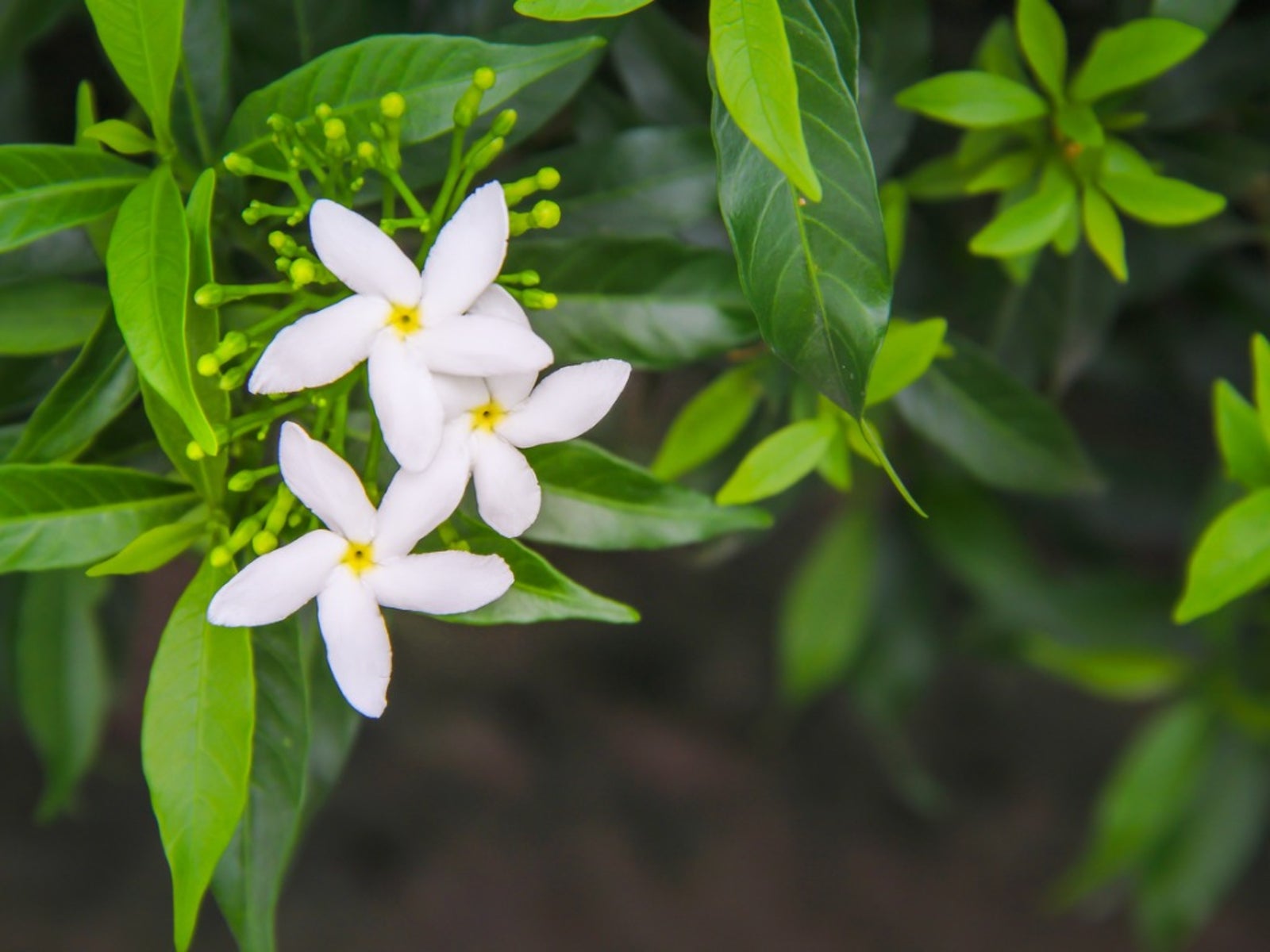Imagine stepping into your garden, and a wave of truly delightful scent washes over you, filling the air with a sweet, almost intoxicating perfume. That, you see, is the magic of jasmine, a plant cherished around the globe for its incredible fragrance. Many folks, perhaps like you, are keen to bring this wonderful experience home, and there's a particular approach, let's call it the "Jasmine Eileen" way, that helps you get the very best from these lovely plants.
This remarkable flower, often a vining shrub, produces clusters of three to five white blossoms, typically from late summer right into early fall. It's a perennial that can grow as a vine or a bush, and its unique tropical smell, along with its pretty blossoms, actually attracts bees. There's just something about it, isn't there? You simply cannot come across a jasmine flower and not pause for a moment to take a good whiff of its sweet, floral scent. So, it's really quite special.
This guide will walk you through everything you need to know about cultivating jasmine, focusing on how to make your "Jasmine Eileen" experience a fragrant success. We'll explore the plant's needs, from light to water, and even how to give it the right support. You might be surprised at how simple it is to grow these beautiful, scent-filled wonders, honestly, it's quite rewarding.
Table of Contents
- The Allure of Jasmine Eileen: A Scented Journey
- Cultivating Your Own Jasmine Eileen: Essential Care Tips
- Beyond the Basics: Advanced Jasmine Eileen Insights
- Frequently Asked Questions About Jasmine Eileen
- Bringing the Fragrance Home
The Allure of Jasmine Eileen: A Scented Journey
The "Jasmine Eileen" approach, in a way, emphasizes truly understanding and nurturing this plant to maximize its incredible fragrance and beauty. It's about creating a little slice of paradise right where you are. This white, vining flower, as a matter of fact, is best known for its amazing smell, which is something few other plants can really match. It’s a very appealing quality, you know?
What Makes Jasmine So Special?
The common jasmine is a vining shrub that has a very fragrant smell that is appealing. It produces clusters of three to five white flowers from late summer to early fall. The heady fragrance of flowering jasmine in your garden only requires knowing how to plant and care for it. This white, vining flower is best known for the fragrance of its blooms. Delicate and dainty with small flowers, jasmine is known around the world for its unique tropical smell and pretty blossoms that attract bees. The jasmine flower is usually white, although some types might be a little different. One cannot simply come across a jasmine flower and not take a moment to catch a whiff of its sweet floral fragrance. Here's everything you need to know about this flower and plant. The plants are native to tropical and to some temperate regions, which gives them their particular needs. It's quite a distinctive plant, really.
The scent, too, is almost like a signature. It's not just strong; it's got a unique sweetness that can make you feel relaxed and happy. Many people plant jasmine specifically for this reason, as it can transform an ordinary patio or garden corner into a wonderfully aromatic retreat. You might even find yourself just sitting there, breathing it all in, which is pretty nice. So, that's a big part of its charm.
Different Kinds of Jasmine for Your Space
While we often picture white, vining flowers when we think of jasmine, there are actually many different types to consider adding to your garden. Some are true jasmines, part of the *Jasminum* genus, while others are sometimes called "jasmine" but belong to different plant families, though they might share a similar look or scent. You can learn about all the different types of jasmine to add a beautiful flowering shrub to your garden. Knowing these distinctions can help you pick the perfect plant for your specific climate and growing conditions, which is quite important.
For instance, some jasmines are hardy enough for cooler temperate zones, while others truly thrive only in tropical settings. The plants are native to tropical and to some temperate regions, which tells you a bit about their preferred environment. Some varieties are indeed vining, perfect for climbing trellises or walls, while others grow more like a bush, offering a different kind of garden structure. The common jasmine, as we've noted, tends to be a vining shrub, so that's a good one to start with if you're looking for that classic look and smell. It’s very versatile, you see.
Cultivating Your Own Jasmine Eileen: Essential Care Tips
Bringing the magic of jasmine to your own space, following the "Jasmine Eileen" philosophy, means giving it the right kind of care. It’s not overly complicated, but a few key things really make a difference. Learn everything you need to know to grow jasmine, a perennial vine or shrub beloved for its sweet scent. Learn how to grow and care for this plant with the Old Farmer's Almanac growing guide, for instance, which is a pretty reliable source. This will help you achieve those lush, fragrant blooms you're hoping for.
Getting Started: Planting Your Fragrant Friend
When you're ready to plant your jasmine, there are a few basic things to keep in mind. Find tips on light, water, soil, and common jasmine varieties. First off, light: most jasmines love a good amount of sun, often needing at least six hours of direct sunlight each day to truly flourish and produce lots of flowers. If it doesn't get enough light, you might find it grows, but the blooms won't be as plentiful or as fragrant, which is a bit of a shame.
Watering is another key part of it. Jasmine plants prefer consistently moist soil, especially when they are young or during dry spells. However, they don't like to sit in soggy conditions, as that can lead to root problems. So, a good rule of thumb is to water thoroughly when the top inch or two of soil feels dry to the touch. It's a bit of a balance, you know? Good drainage is really important for the soil, too. A well-draining potting mix or garden soil amended with compost will help ensure the roots stay happy and healthy. This helps the plant get the right amount of moisture, not too much and not too little.
Supporting Growth: Training Your Jasmine Vine
If you're growing a vining jasmine, providing some form of support is pretty much essential. Provide support for your jasmine if you want to use it as a flowering vine. Without something to climb on, these plants tend to sprawl, which isn't always the look you're going for, and it can make them less vigorous. A trellis, an arbor, a fence, or even sturdy wires along a wall can give your jasmine something to twine around as it grows. You’ll want to gently guide the young shoots onto the support as they lengthen. This helps them grab on and start climbing upwards, which is what they naturally want to do.
Training your jasmine not only helps it grow upwards but also encourages better air circulation around the plant, which can help prevent some common plant issues. Plus, it just looks really beautiful when it’s climbing, draped with those lovely white flowers. It can create a wonderful focal point in your garden, almost like a living curtain of fragrance. So, it's very much worth the effort, honestly.
Keeping It Happy: Ongoing Care for Lush Blooms
Once your jasmine is established, ongoing care involves a few regular tasks to keep it thriving. Pruning is one of these; it helps maintain the plant's shape, encourages new growth, and can even boost flower production. Typically, you'll want to prune after the main flowering period, removing any dead or weak branches and trimming back overly long shoots. This helps the plant put its energy into healthy growth and more blooms next season, which is kind of the goal, right?
Feeding your jasmine with a balanced fertilizer during its growing season can also give it a nice boost. Just follow the instructions on the fertilizer package, as too much can be worse than too little. And, of course, keep an eye out for any signs of pests or diseases. Addressing these early can prevent bigger problems down the line. A healthy plant is a happy plant, and a happy plant means more of that wonderful jasmine fragrance for you to enjoy. It's a simple truth, really.
Beyond the Basics: Advanced Jasmine Eileen Insights
The "Jasmine Eileen" approach goes a little beyond just the basic planting and care. It involves appreciating the full impact of your jasmine on its surroundings and knowing how to handle any little hiccups that might come up. It's about getting the most out of your plant, in a way, truly.
Attracting Pollinators with Jasmine's Charm
As mentioned earlier, delicate and dainty with small flowers, jasmine is known around the world for its unique tropical smell and pretty blossoms that attract bees. This is a lovely bonus for any garden, as bees and other pollinators are so important for the ecosystem. Planting jasmine means you're not only enjoying its beauty and scent but also supporting local wildlife. It's a win-win, isn't it?
The sweet, inviting fragrance acts like a beacon for these helpful insects, guiding them to the nectar and pollen within the blossoms. So, as your jasmine grows and blooms, you might notice a gentle hum around it, a sign that your garden is bustling with life. It’s a pretty cool thing to witness, actually, and it adds another layer of joy to having these plants.
Troubleshooting Common Jasmine Challenges
Even with the best care, plants can sometimes face little issues. If your jasmine isn't blooming as much as you'd like, it might be due to insufficient sunlight, too little water, or perhaps a need for some nutrients. If the leaves are turning yellow, it could be a sign of overwatering or a nutrient deficiency. Sometimes, tiny pests like aphids or spider mites might try to make a home on your plant. A gentle spray of soapy water can often take care of these small invaders. It’s usually a simple fix, you know.
The key is to observe your plant regularly. A quick check every few days can help you spot problems early, making them much easier to fix. Remember, plants communicate their needs through their leaves, stems, and flowers. Learning to "read" these signs will make you a much more successful gardener, and your jasmine will thank you with abundant fragrance. It's really about being a little attentive, that's all.
Frequently Asked Questions About Jasmine Eileen
Here are some common questions people often ask about jasmine, helping you get the most from your "Jasmine Eileen" experience.
What makes jasmine so fragrant?
The incredible scent of jasmine comes from a complex mix of volatile organic compounds produced by its flowers. These compounds are released into the air, especially at night or in the early morning, to attract pollinators. Few plants have a fragrance as intoxicating as jasmine, which is why it's so popular for perfumes and aromatherapy. It’s a very natural wonder, really.
How do you care for a vining jasmine plant?
Caring for a vining jasmine involves providing plenty of sunlight, consistent moisture without waterlogging, and well-draining soil. Crucially, you need to offer a sturdy support structure like a trellis or arbor for it to climb. Regular pruning after flowering helps maintain its shape and encourages new, healthy growth. It’s pretty straightforward, actually, once you get the hang of it.
Are all jasmine flowers white?
The jasmine flower is usually white, although some varieties can have yellow or even pinkish blooms. The common jasmine, which is what many people think of, typically produces those lovely white clusters. However, there are many different types of plants called "jasmine," and their flower colors can vary a bit. So, while white is common, it’s not the only color out there, you know?
Bringing the Fragrance Home
Growing jasmine, or embracing the "Jasmine Eileen" way of gardening, is a truly rewarding endeavor. You learn how to grow and care for jasmine, a fragrant vine or shrub perfect for gardens or containers. Its captivating scent and beautiful white flowers can transform any space, making it feel more peaceful and inviting. Whether you're a seasoned gardener or just starting out, the joy of a blooming jasmine is something truly special. It's a plant that gives back so much for a little bit of care, and that's a pretty good deal, you might agree.
To deepen your knowledge about this wonderful plant, you could always check out resources like the Old Farmer's Almanac growing guide. They have some really good tips. Learn more about fragrant plants on our site, and if you're curious about different flowering shrub options, we have a guide for that too. Just imagine, your own garden filled with that incredible aroma!



